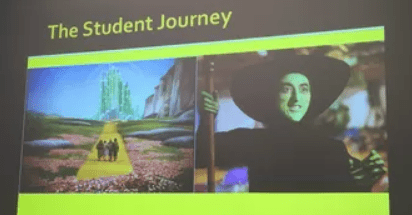Ellis Saxey discusses considers the place of content warnings (also referred to as trigger warnings) in reducing not academic difficulty, but those psychological challenges that students can face which don’t necessarily contribute to their ability to progress in their learning.
Content warnings are a contentious issue within higher education. These warnings are used to flag in advance content that students might find unusually distressing. One argument against them is that they’re aiming to make learning easy, stress-free, or painless. Opponents suggest you can’t stop learning from being difficult, and at times distressing, and shouldn’t try.
I agree that learning will always be hard. It takes effort, practice and dedication.
An LSE education may be additionally hard, because many students come to LSE to study and research pernicious problems: inequality, political tyranny, armed conflict, poverty. These topics are likely to inspire intense responses in our students.
Even in more ‘neutral’ disciplines, our students can feel ignorant and fear failure, which are emotionally taxing.
I believe some forms of difficult, stressful learning can be useful.
I vividly remember tackling Heidegger as an undergraduate, and feeling frustrated and stupid, to the point of despair. But reading his work opened up a new field of debate for me. The process of tackling it taught me how to systematically use other approaches (annotation, note-taking) and tools (including a dictionary of philosophy). It also made me confident that I could take on the rest of the reading list. The best educational struggles give you not only knowledge, but also new abilities, and self-belief.
Believing this, I’m still in favour of being able to use content warnings (if an academic chooses to, as one facet of the task of selecting and presenting teaching material). Content warnings don’t reduce this kind of difficulty – the productive, useful difficulty, But they can be part of reducing other kinds of difficulty. For example, they could lessen the shock of unexpectedly encountering a graphically violent image. Or they might allow a student to better prepare for a political discussion in which they have a personal investment.
To use an imprecise comparison: good learning is like running a marathon. A marathon can be painful, but it’s an achievement, and it gives you additional benefits (such as fitness, strength, confidence). Falling down a hole is also painful. It doesn’t give you anything useful (and it may impact on whether you finish the marathon).
I’m suggesting we consider content notices in this context: they don’t reduce the essential, productive hard work of learning, but they may reduce the aspects of learning which are hard but not helpful.
Learning doesn’t need to be made additionally difficult because students are surprised by intensely impactful content. A content note on a syllabus can tell students which sessions will contain highly freighted images or discussions. This allows the student to mentally prepare, and to put tools in place to ameliorate strong reactions. As Onni Gust writes, warnings ‘give students a chance to pause, then focus’.
Not every student will need them, or even read them, and not every troubling aspect can be noted in advance. But some students will use them to become more able to set about the hard work of learning.
Note: This post originally appeared in the LSE Education Blog on 21 February 2017. In the second part of this post, Lee-Ann Sequeira presents an alternative view.
_________________________________________________________________________________________________________________________
This post is opinion-based and does not reflect the views of the London School of Economics and Political Science or any of its constituent departments and divisions.
_________________________________________________________________________________________________________________________
Photo by Miguel Henriques on Unsplash





